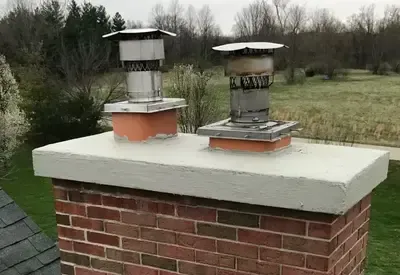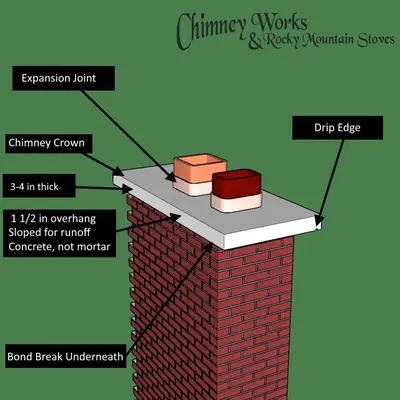
Chimney 101: Chimney Crown
The chimney crown is at the top of your chimney, and its purpose is to protect the brick chimney structure below from weather and water damage. Chimney Crowns should be made using cement, not mortar. This is an important fact that many masons overlook or willfully ignore.

There are many chimney crowns, but we see many that were not built properly and are failing well before their normal end of service.
There is actually quite a bit of science that goes into building a chimney crown properly. First, a crown should be built with a membrane or bond break underneath it so that neither the bricks nor the crown crack when the components of the chimney naturally expand and contract. A mesh should be laid mid pour to strengthen the chimney crown, acting in a similar way that rebar does in larger concrete pours.
A chimney crown should be sloped so that water runs off away from the flue. There should be at least 1 1/2 inches of overhang extended past the chimney, forming an “umbrella”. The crown should also have a drip edge of some sort on the underside of the overhang to prevent water from running underneath the crown. Yep, water can run upside down. There are drip edges commercially available, but a groove in the cement will work just as well.
Expansion Joint
Perhaps most important of all in the prevention of cracks in a chimney crown is an expansion joint. Spongy insulation is wrapped around the chimney flue when the crown is poured, leaving room for the hot flue tiles to expand. This insulation is trimmed off and sealed with a flexible sealant so that water can not penetrate.
Maintenance
A chimney crown should be sealed with a breathable sealant such as CrownSaver. An annual inspection should be done. In the event that you get a report of cracks in the chimney crown, your sweep may recommend the use of CrownSeal which will seal the cracks with a flexible, breathable sealant.

